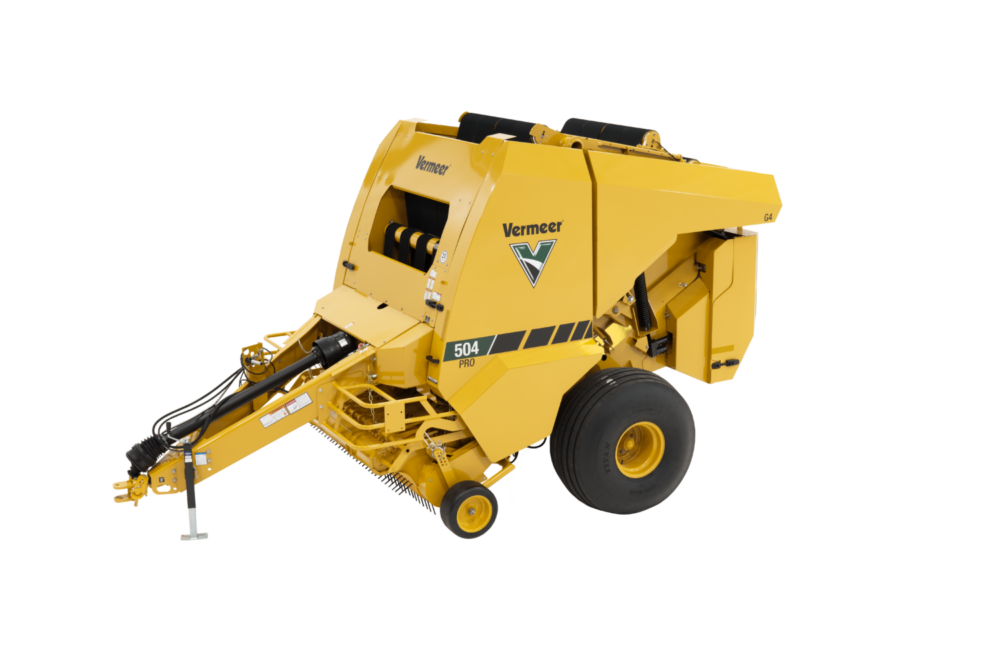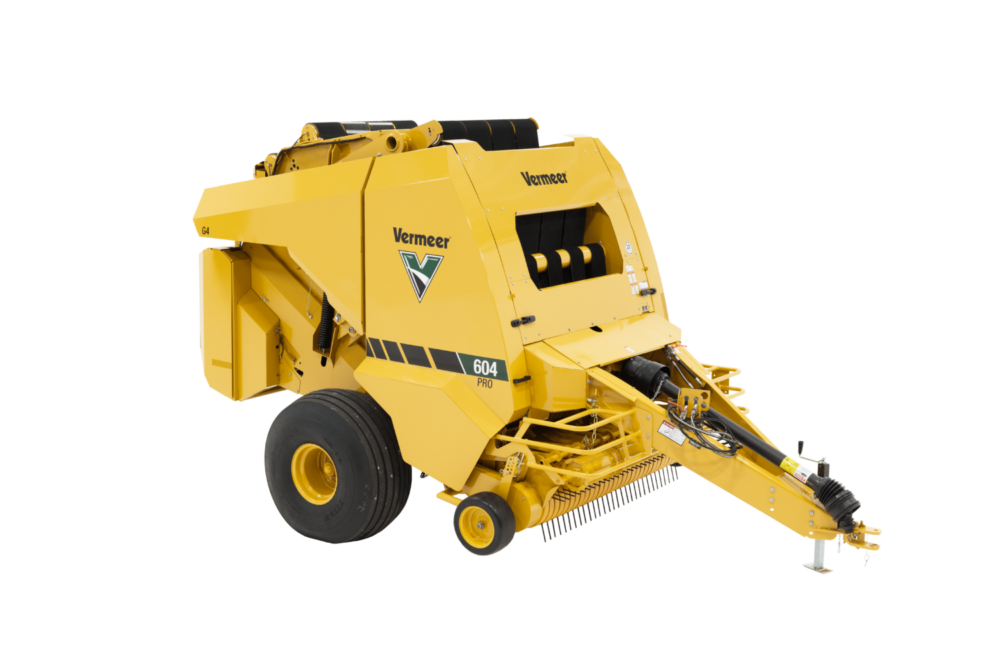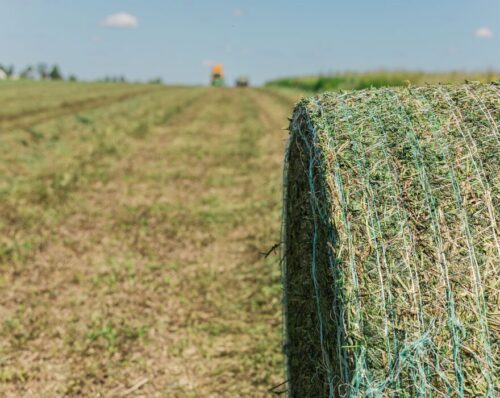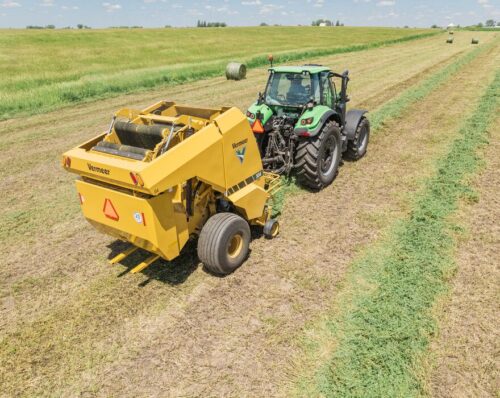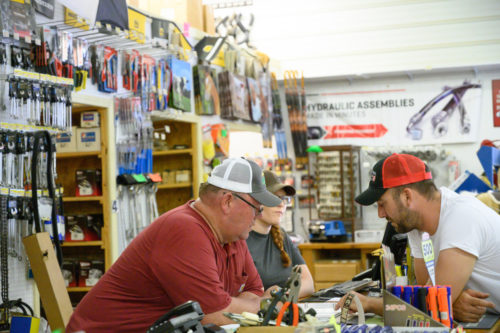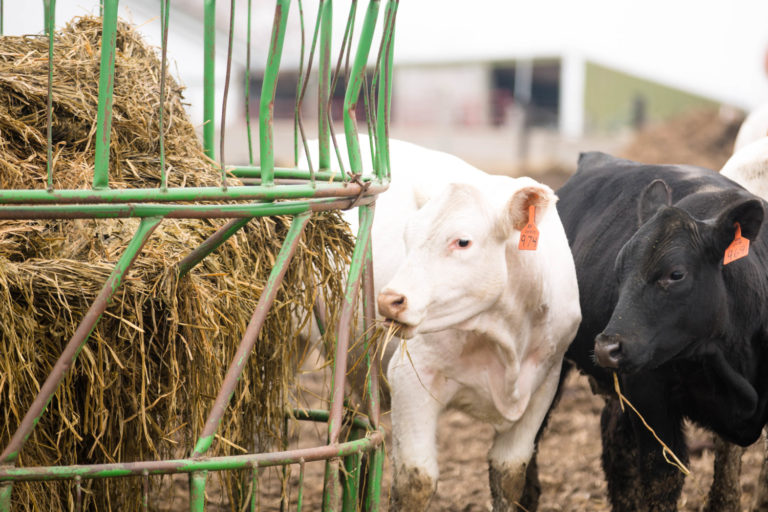
Stop Hay Waste With the Right Feed Management
April 2020
When hay prices are high and supplies are tight, maximizing hay feeding efficiency is a major priority. And employing the right feedbunk and feed management system is a key component of getting the most out of your hay supplies.
“Data shows the type of feeder you have has a big impact on the utilization of that forage. If we just set a bale out in the field, we figure about 60 percent of that forage is consumed, and 40 percent is pulled out and trampled on. Once that animal defecates or urinates on it, she’s not going to go back and eat it,” said longtime University of Wisconsin-Madison Forage Agronomist Dan Undersander.
With tight supplies and high prices for hay around the U.S., the cost of that hay loss is increasing, putting a premium on good hay feed management. Information from a recent study conducted by Michigan State University animal scientists showed the cost of hay waste balloons quickly; over the span of 200 days, the cost of hay loss for a 20-cow feeder based on a price of $100/ton surpasses $800 with 10 percent waste, but at 20 percent, the cost sails past $1,800. At 30 percent, that cost is nearly $3,200. So how can you help minimize losses?
According to Vermeer Product Manager Josh Vrieze, there are many options to optimize hay feeding operations, both in terms of equipment and overall strategy. Both depend a great deal on existing facilities and how you’re feeding your cattle. Matching these variables with the right setup is critical in maximizing feed efficiency. There is no single ideal system for every operation.
“It depends wholly on facilities and where you’re feeding. In a pasture, do you want to feed whole bales or use a bale processor?” Vrieze said. “You also should account for cost and labor. Cost is going to drive a lot of decisions.”
Common feedbunk types
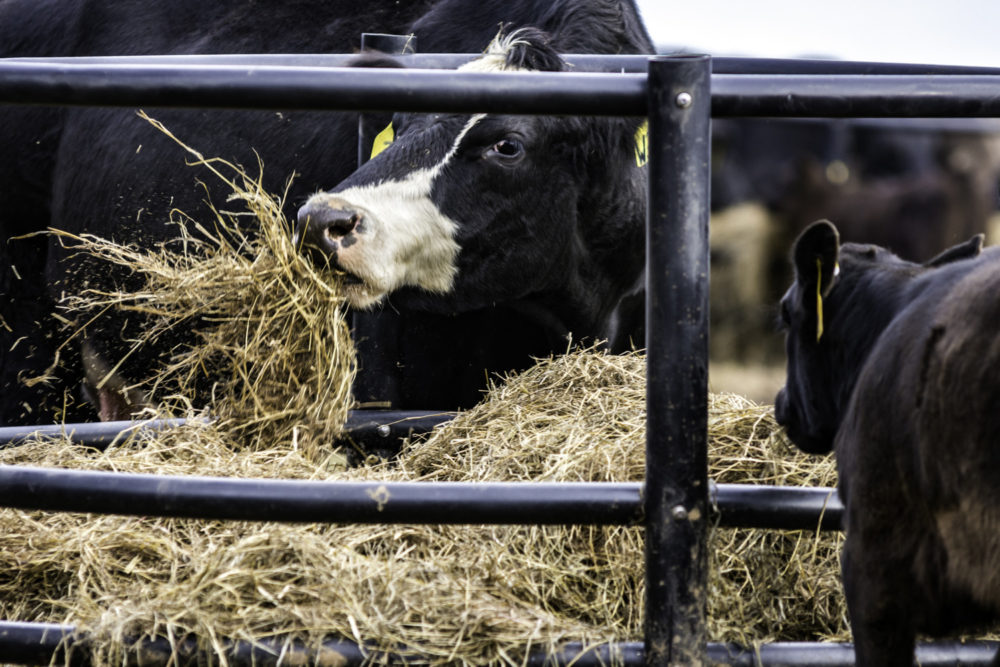
Aside from simply setting bales on the ground, ring-style bale feeders have long been a standard for feeding large round bales in a pasture. There are different types of ring feeders, some with cradles or cone-style floors that prevent dropped hay from reaching the ground, where it often winds up being wasted. Other bale feeders include cone-shaped feeders with a solid bottom panel, trailer feeders and cradle-type bunks with slanted, vertical bars.
In recent research led by Michigan State University Extension Beef Specialist Dan Buskirk, cradle, trailer and ring feeders all allowed higher hay waste than rings with cone-style floors or cone-shaped feeders in a study of 160 feeding cows. While both cradle and cone-style feedbunks provided marked improvements over feeding hay on the ground, cone feeders were found to be the best type in decreasing hay waste.
“A cradle-style bale feeder is better for feed efficiency than a ring feeder without a base. If a cow has her head in the ring where the crop is cradled, any hay that falls while she chews will fall back in the cradle, not on the ground,” Vrieze said. “With standard bale rings, she will pull back and that hay will fall on the ground, where it will become bedding versus feed.”
Bale rings, cone- and cradle-style bale feeders are typically lower in cost and can be managed with basic equipment and minimal labor once set up. A concrete feed bunk can drastically decrease hay waste compared to ring-style feeders and may work best on some operations, but it is more expensive to construct and maintain.
Some producers opt to supplement grazing by spreading chopped or processed hay in lines in the pasture. With the right equipment, this strategy can be effective and keep waste at a minimum, since cattle will typically consume all the hay provided. Incorporating processed hay into a ration with other ingredients is also more time-intensive and increases costs, but rate of gain is typically considerably higher, Vrieze said.
The animal behavior component
More goes into how much hay is wasted than simply the feedbunks themselves. Animal behavior, whether because of herd hierarchy or the ability of a feeding cow to mimic common grazing motions, also influences how much hay is consumed.
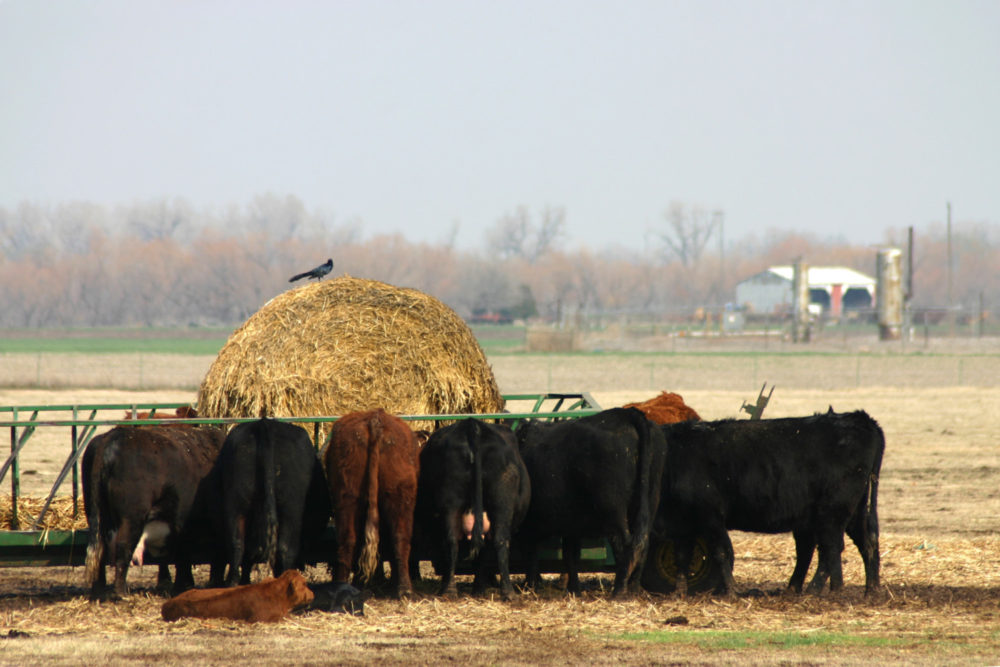
“Cattle eating from the cone and ring feeders would have been able to more closely mimic a grazing position than those eating from the trailer and cradle feeders would, and this may have contributed to reduced feed losses,” Buskirk said. “Feed wastage from cows tossing feed over their backs or along their sides may be reduced by allowing the animals to eat in a head-down, natural grazing position from ground level rather than an elevated platform. In addition, an animal’s ability to throw its head and toss feed is limited when their head is beneath a rail, such as the top rail on the cone, ring and trailer feeders.
“When a competitive condition exists for available feed, dominant cows assert their position in eating before less dominant cows. The amount of time feeding has been positively correlated with dominance behavior,” Buskirk said, adding that in some cases, it’s as much about providing feedbunk space as it is providing the right bunk in general. It’s important to provide ample feed bunk space to allow all animals to feed at once, which will prevent “bully” animals from consuming more forage than less-competitive animals.
The value of processing hay

The length of the forage material when fed has a lot to do with how much hay is potentially wasted. When feeding baled hay, waste potential is high because of how animals feed. By using a baler chopping attachment — like the Xtracut 17 chopper system available on Vermeer 504 Pro or 604 Pro balers — or a bale processor like the Vermeer BPX9010, you can size forage to help minimize waste by providing a forage source that’s more convenient for cattle to consume.
“When you size your forage crop with one of these tools, it enables a cow to go down and grab the hay and not have any sticking out the sides of her mouth. If you are feeding a bale that’s not processed, a lot of extra hay is falling out of the sides of her mouth and onto the ground and becoming waste,” Vrieze said. “If you’re sizing that hay, it could waste less.”
When combined with a bale feeder with a cradle or cone bottom that prevents dropped hay from immediately becoming waste, forage sized with either a bale processor or chopping baler can have a considerable influence on hay waste. But that savings is highly variable among farms.
No one-size-fits-all solution
Achieving high hay feed efficiency and resulting rate of gain is ultimately a function of both size and management strategies. Cost is the primary consideration when looking to make changes in hay feeding, but so is how you’ve managed your forage production and feeding operations in the past. In addition to feedbunk types and hay processing, things like harvest and baling operations should be considered when looking to ramp up hay efficiency.
“Hay quality is generally higher when you put it up wet, but a lot depends on the weather. If I bale hay at 16 percent moisture, I’ll lose more leaves than when I do at 50 percent, and the higher moisture hay is more palatable for cows,” Vrieze said. “Cost is going to drive a lot of decisions, and you have to consider labor. For example, once you buy a bale processor and use it, you’re not going to not use it again. You will understand the value it can bring your operation and you’re likely not going to go without it. You have to consider factors like these to find what’s best on your farm.
“The right solution for you depends on factors like input costs, facilities, lifestyle and output, and you need to identify these factors to make the best decision,” Vrieze added. “There’s not one system that’s perfect for everyone out there.”
This article contains third-party observations, advice or experiences that do not necessarily reflect the opinions of Vermeer Corporation, its affiliates or its dealers. Testimonials and/or endorsements in specific circumstances may not be representative of normal circumstances experienced by all customers.
Vermeer and the Vermeer logo are trademarks of Vermeer Manufacturing Company in the U.S. and/or other countries. © 2018 Vermeer Corporation. All Rights Reserved.
Sources:
- Dan Undersander: https://www.youtube.com/watch?v=lOXyrC5rLxc
- Michigan State University research: http://msue.anr.msu.edu/uploads/236/58549/HayFeederDesign.pdf
- Phone interview with Josh Vrieze, email follow-up with Dan Buskirk (MSU)

